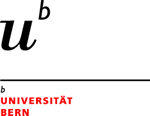Prof Peter Meister, Prof T Baubec
No more applications being accepted
Funded PhD Project (Students Worldwide)
About the Project
In eukaryotes, genomic DNA is wrapped around histones, giving rise to chromatin. Histones are modified post-translationally by the addition of several chemical groups. These modifications correlate with active euchromatin and silent heterochromatin. In the nematode C. elegans, heterochromatin is defined by two types of histone marks, methylated histone 3 lysine 27 and lysine 9 (H3K9). To date, worms have been instrumental in the definition of the interplay between H3K9 methylation, subnuclear localization and transcriptional repression of repetitive elements. Moreover, previous studies demonstrated a function for methylated H3K9 in cell fate stabilization. The correlation between transcriptional silencing and the presence of the mark has been clearly established, yet the protein content of chromatin associated with H3K9me3 and the importance of these proteins for gene repression remains largely unknown. This project aims at the unbiased functional characterization of H3K9me3-associated proteins in C. elegans before extending it to other histone marks.
As part of an ongoing collaboration between the Meister laboratory at the University of Bern and the Baubec laboratory at the University of Zürich, we have developed genetically encoded probes specific for trimethylated histone 3 lysine 9 that can be stably expressed in intact nematodes. We propose to use these probes to define which proteins associate with H3K9me3 heterochromatin in wild-type animals by mass spectrometry. The role of these proteins in regulating heterochromatin function will then be functionally validated, shedding light on the molecular mechanism by which the histone mark directs transcriptional repression during development. By extending our research to strains mutant for previously characterized H3K9 chromatin factors, we will explore their role in regulating heterochromatin composition and function. Technically, the two laboratories have extensive experience in C. elegans and mammalian cells genetics and genomics methods, advanced microscopy approaches and chromatin mass spectrometry.
The position is in Bern, with frequent visits to Zürich (located one-hour train ride away) for the mass spectrometry part. Bern is the capital of Switzerland, the old city is UNESCO world heritage. The University, with almost 15’000 students and 1160 teachers delivers 500 PhD diplomas per year and is ranked among the best 200 Universities worldwide (Shanghai rating). The Institute of Cell Biology is a very dynamic place and has recently hired 5 new group leaders.
Please email, as a single PDF file, your cover letter, CV (including relevant courses and grades received), and contact information for three references to: [Email Address Removed] and [Email Address Removed].
Funding Notes
PhD position funded by the Swiss National Science Foundation

 Continue with Facebook
Continue with Facebook

